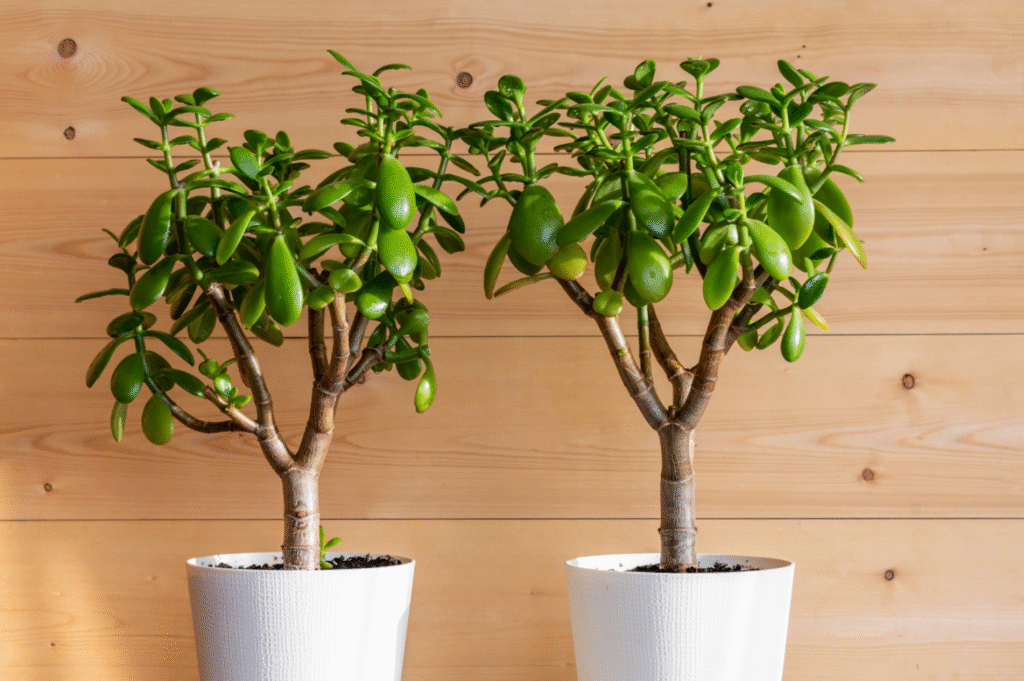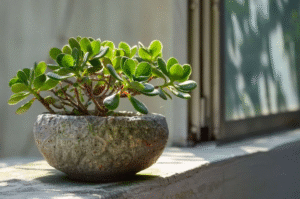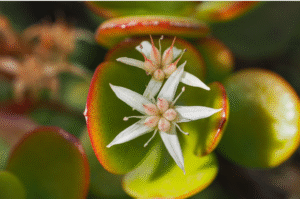Jade plants (Crassula ovata), with their glossy green leaves and woody stems, are a favorite among succulent lovers. These low-maintenance houseplants can thrive for years with minimal care, but one question often puzzles plant owners: Do jade plants like to be root-bound?
In this detailed care guide, we’ll answer that question and explore the pros, cons, and best practices of potting jade plants. If you want your jade to flourish, grow faster, or bloom beautifully, understanding its root habits is key.
What Does “Root Bound” Mean?
Before diving into jade plant preferences, let’s clarify the term root-bound.
A plant is root-bound when its roots have outgrown the container and start circling the pot’s interior. This limits their ability to absorb water and nutrients, potentially leading to stress, stunted growth, or other health issues.
Do Jade Plants Actually Like Being Root Bound?
The short answer: No, jade plants don’t “like” being root-bound, but they tolerate it better than many other plants.
Succulents like the jade plant grow slowly and are quite resilient. When slightly root-bound, jade plants may continue to grow and even bloom under the right conditions. However, prolonged root crowding can eventually affect their overall health.
Why Some Gardeners Keep Jade Plants Slightly Root Bound
Some experienced growers intentionally let their jade plants remain slightly root-bound for a few good reasons:
1. Encourages Flowering (Sometimes)
Some believe that a mildly root-bound jade plant is more likely to bloom. While this isn’t guaranteed, slight stress from tight roots can trigger flowering in mature plants, especially in winter months under proper light.
2. Slower Growth = Easier Maintenance
A root-bound jade plant grows more slowly, which may be desirable for indoor gardeners who prefer a more compact plant with less need for repotting.
3. Helps Prevent Overwatering
Smaller pots dry out more quickly. Since jade plants are sensitive to overwatering, keeping them in snug containers can help reduce the risk of root rot caused by soggy soil.
Signs Your Jade Plant Is Too Root Bound
While a slightly root-bound jade can still thrive, there’s a limit. If left too long, the plant will start showing stress. Watch for these warning signs:
- Roots are growing out of the drainage holes
- Soil dries out very quickly after watering
- The plant appears top-heavy or unbalanced
- Leaves begin to wrinkle, yellow, or drop
- Growth becomes stunted despite good light
If your jade plant shows any of the above symptoms, it’s time to consider repotting.
When Should You Repot a Jade Plant?
Every 2 to 3 years is generally a good repotting schedule for jade plants, depending on their size and growth. Young plants may need repotting more often, while older, slow-growing ones can stay in the same pot for longer.
Here are some ideal times to repot:
- Spring or early summer (during the active growing season)
- When the plant becomes top-heavy or unstable
- When soil drains poorly or hardens over time
- After purchasing from a nursery with poor potting mix
Avoid repotting in winter when the plant is dormant.
Best Pot Size for Jade Plants
Choose a pot that’s 1 to 2 inches larger in diameter than the current container. Going too large too soon can lead to overwatering issues, especially with succulents.
Recommended Features:
- Drainage holes at the bottom
- Terracotta or ceramic materials (for better airflow)
- Shallow, wide pots are ideal for stability
Jade plants are top-heavy, and a sturdy pot helps prevent tipping.
What Happens If You Never Repot?
If you leave a jade plant root-bound for too long:
- Roots may choke themselves and damage the plant
- Soil loses nutrients, limiting growth
- Water retention decreases, leading to quick drying
- The plant becomes stressed and prone to leaf loss
While jade plants are hardy, they’re not indestructible. Regular monitoring and occasional repotting are crucial for long-term health.
Tips for Healthy Jade Plant Roots
Here’s how to care for your jade’s roots and avoid letting them become too crowded:
Use the Right Soil
Always use a well-draining succulent mix. You can create your own by mixing potting soil with coarse sand or perlite.
Water Wisely
Let the soil dry out between waterings. Jade plants hate sitting in wet soil, especially if they’re root-bound.
Prune Roots During Repotting
When repotting, gently trim away any rotted or overly tangled roots. This helps stimulate new root growth.
Loosen the Root Ball
If the roots are tightly packed in a circular pattern, gently loosen them before placing the plant in the new pot. This helps the roots spread into the fresh soil.
Should You Divide a Large Root Bound Jade?
If your jade has become too large or you want to multiply your plant collection, you can divide it during repotting.
How to Divide a Jade Plant:
- Gently remove the plant from its pot
- Separate clumps with roots attached using a sterile knife
- Replant divisions in smaller pots with fresh soil
This method not only refreshes the plant but also gives you more jade plants to grow or gift!
Final Verdict:
Jade plants don’t prefer being root-bound, but they tolerate it well, and in some cases, it may even encourage blooming. However, prolonged root crowding can eventually lead to health issues, so it’s best to repot every few years.
By choosing the right pot size, soil, and timing, you can help your jade plant stay healthy and beautiful for many years.






